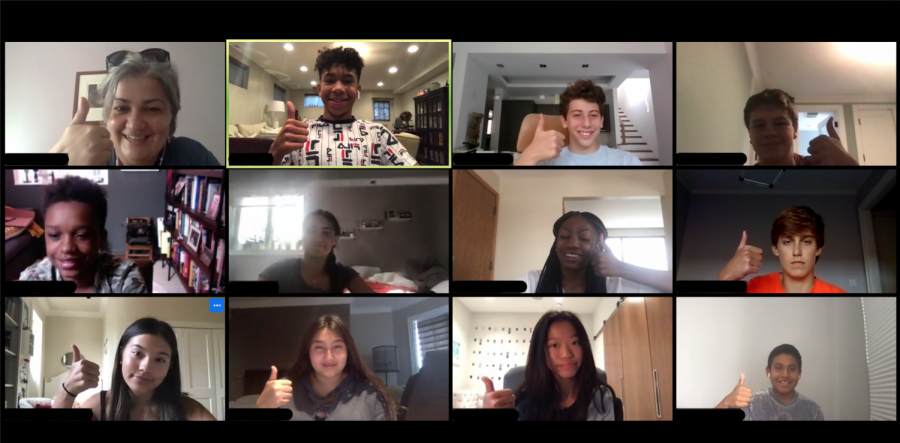Should all classes be unmuted?
As school soars back into full swing and everyone settles into this semester’s unique schedule, many have considered whether students should mute themselves in their synchronous Zoom classes. Most teachers have chosen to stick to the norm and have students mute themselves when they aren’t answering a question or making a contribution. However, the few teachers that do have unmuted Zoom calls have found heartening successes.
By nature, school is a loud and vibrant environment, distractions are inevitable, and the hum of background noise can bring comfort in creating a communal atmosphere. Shannon Barker has initiated unmuted Zoom calls in her 12th grade English class, “The Meaning of Life in Lit.”
“I wanted our classes on Zoom to feel as much like classes in person as possible,” she said. “In person, I can hear people sneeze, laugh, interject, etc. I also think that the very act of having to unmute keeps some from participating in conversations when they otherwise might jump in.”
Various students tend to agree. Senior Tia Scariotta said, “What I have noticed with my classes that keep the mic on is that everyone seems more willing to jump into group discussions. When teachers have everyone mic off, it can be so awkward because people don’t want to turn it on and talk as much.” Giving students the option to stay on mute certainly stumps engagement, as teachers take over the talking and a once interactive class begins to stray into a lecture.
Unmuting also eliminates a lot of potential distractions, most notably the usage of phones during classes. Sophomore Anaitzel Franco, a student in Julie Cousin’s Intermediate Low French class, noted that being unmuted can lessen the temptation toward distractions. “I will say that being unmuted makes it much easier to pay attention in class,” she said. Although some students avoid distractions with ease, others may find that an unmuted call more closely replicates that of an actual class, pressuring them to stay focused as they would normally.
Still, background noise is an obvious concern, and there is no denying its inevitability.
“Background noise is as bad as people assume,” Anaitzel said. “I constantly hear loud dogs barking or cars letting out noise.” In her household, her family members are often in the room she takes her classes in. “They can’t help making noise, and it can be picked up through the computer microphone. It is often a distraction to me, so I would assume it can distract my peers.”
Some may be quick to flag this inconvenience as a reason to mute classes. Nevertheless, “distractions” such as these may be the key to a more personal and stimulating class, one that is less robotic and purely practical. Alternatively, students may find that they optimize their focus by not taking their classes in loud or distracting environments, whether their classes are muted or not.
In a class such as improv, it seems impossible to have adequate engagement and flow while muted. “It’s nice to be unmuted so that we hear people’s laughter and reactions live,” said Upper School Improv teacher Nick Baer. “It really helps, not only for a sense of community and collaboration but also for feedback purposes.” By nature, improv is a fast-paced, interactive class, rooted in social interaction, so even though the class cannot be conducted in person, by unmuting, one can attempt to replicate it over Zoom.
“Participation seems way more natural and it makes the class more enjoyable,” said Ellie Baker, a sophomore and first-time improv student.
Classes will inevitably be controlled by those leading them, and every teacher will have different opinions regarding e-learning and how it should be executed. Perhaps normalizing unmuted classes, especially as the year goes on, will be a healthy progression toward giving students the closest experience to that of in-person school.
























































